The ancient fortified city of Fatehpur Sikri, built by the 16th century emperor Akbar, is the perfect time capsule into the era of intricate architecture, mathematical structures and complex philosophy. Noted architect Lucy Peck discovers the city of victory and explains why this Mughal marvel is a UNESCO World Heritage site
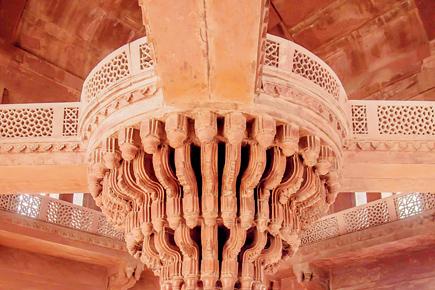
Fatehpur Sikri
It is common knowledge that Fatehpur Sikri or (as usually translated) the City of Victory was built as Akbar’s residence. In the book, Revisiting Fatehpur Sikri: Akbar’s Masterpiece, architect and author Lucy Peck collates historical, archeological, architectural, and aesthetic information.
ADVERTISEMENT
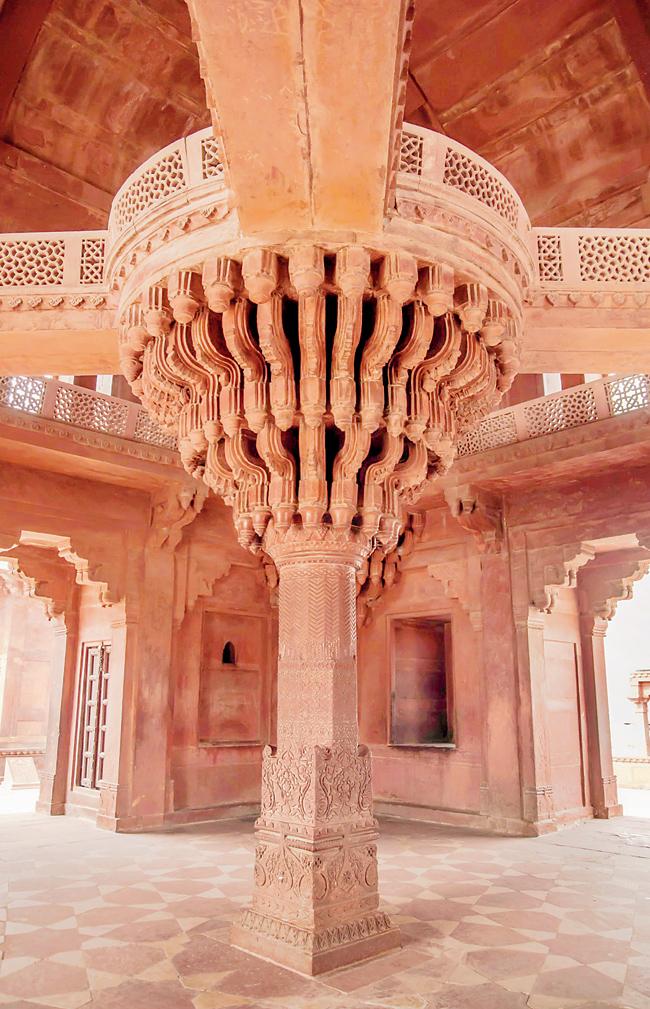
Layer by layer, she peels succinct information that reward the reader with visuals as well as anecdotes. For instance, the word victory assumes a playful meaning, as Peck shares in the book, “Akbar began to make annual pilgrimages to Ajmer for the saint’s urs or death anniversary and on later pilgrimages Akbar would halt at Sikri, which is situated on the road from Agra to Ajmer to converse with Sheikh Salim.
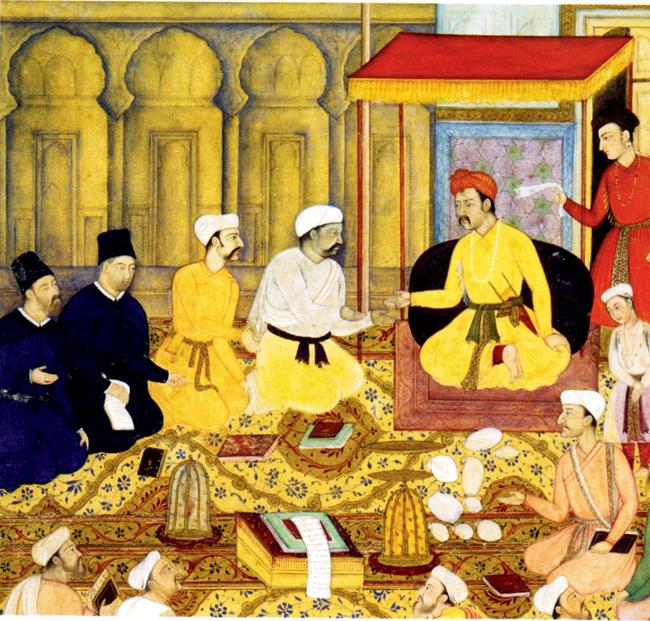
Detail from the Akbarnama showing Akbar in the Ibadat Khana. On the left are two Jesuit priests. It is thought that the man with his hands held out to Akbar is Abul Fazl.
On his pilgrimage in the winter of 1568-9, he is said to have consulted the Sheikh about his problems in producing an heir…The saint assured him that he would have three sons, so when one of Akbar’s wives was found to be pregnant it was decided that she would be moved to Sikri to be under the protective influence of the saint, where she gave birth to a boy in September 1569.”
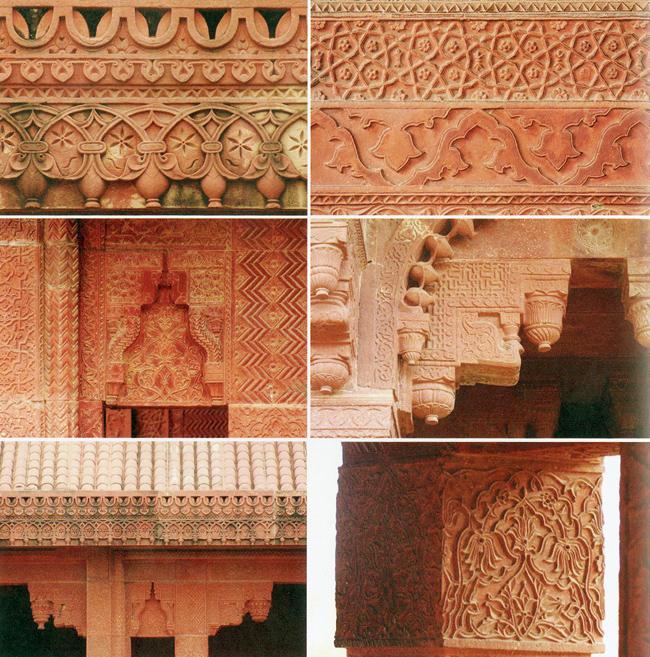
Peck makes it a point to spell out different designs found throughout Fatehpur Sikri. Pics courtesy/Niyogi Books
Peck’s forte also comes through as she deconstructs the structure of the red sandstone marvel. From parapet decorations to including maps of the village, the conservationist is quick to point out the many alterations the structure had gone under.
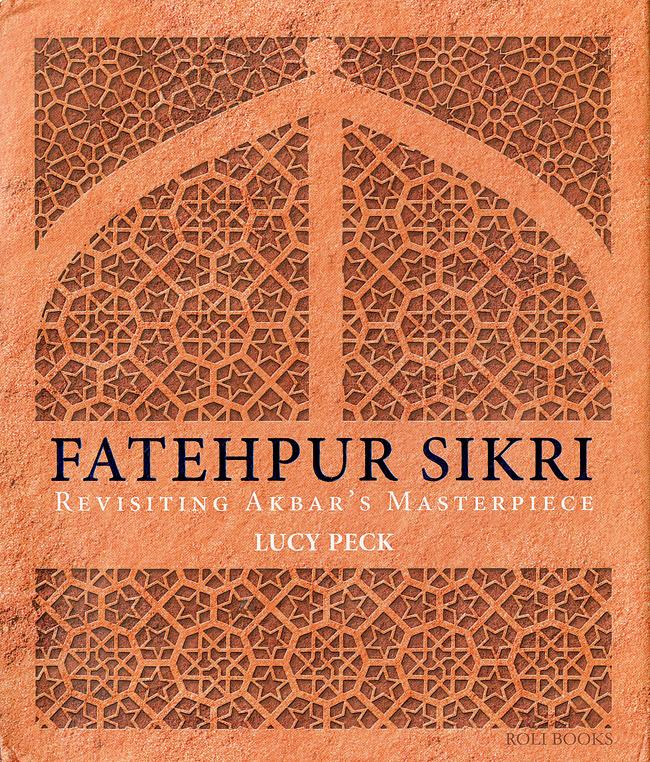
Fatehpur Sikri: Revisiting Akbar’s Masterpiece, Lucy Peck, Roli Books, Rs 795. Available at leading bookstores.
Also, she lays a lot of stress on how Fatehpur Sikri was not abandoned once Akbar shifted to Delhi.
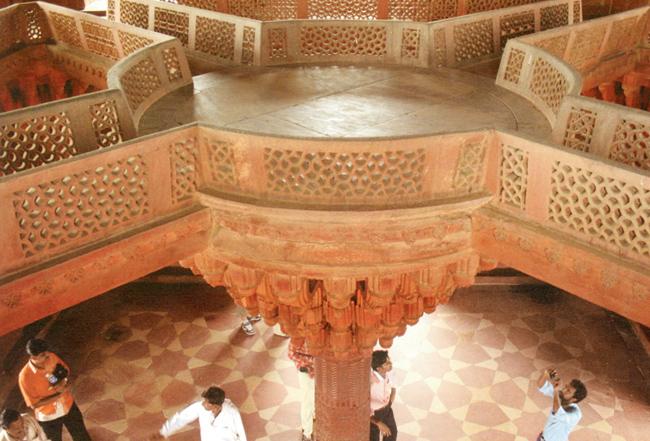
Diwan-i-Khas: The first floor platform in the Palace. Peck feels that it is “difficult to imagine a use...Some have suggested that Akbar sat on the circular platform...it would, however, be difficult to imagine a more cumbersome way of having a discussion.”

Hawa Mahal and viaduct, with the ‘Haram Garden’ chatri and pool on the right
Take it as a coffee table book or as a faithful companion on your trip to the Sikri; a revisit of the fortified beauty is a must.
 Subscribe today by clicking the link and stay updated with the latest news!" Click here!
Subscribe today by clicking the link and stay updated with the latest news!" Click here!






